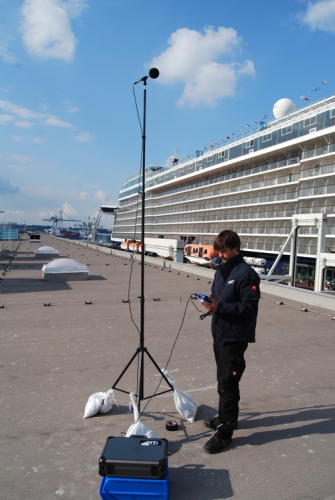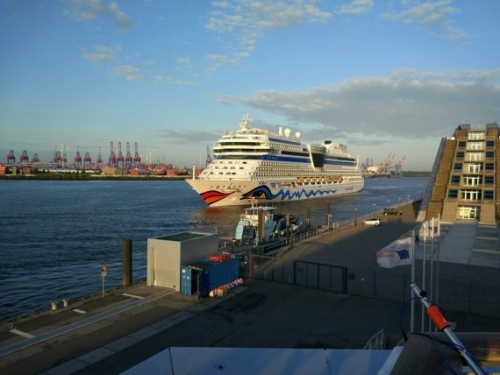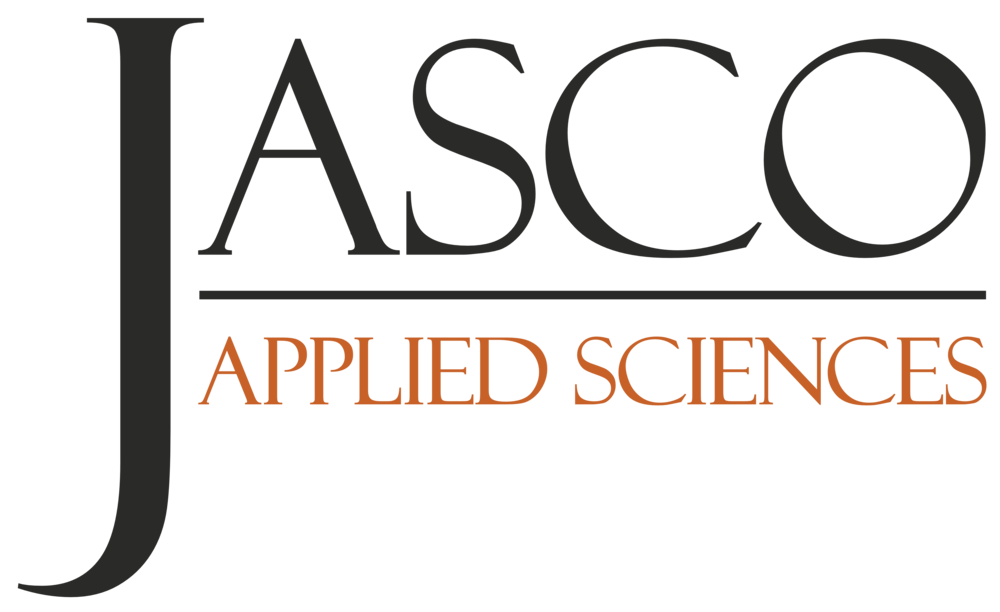New opportunity to join our team
February 23rd 2024
Today we start to look out for new talents willing to join our small team of shipacoustic experts in our German JASCO / DW-ShipConsult office.
Will you become our next teammate?
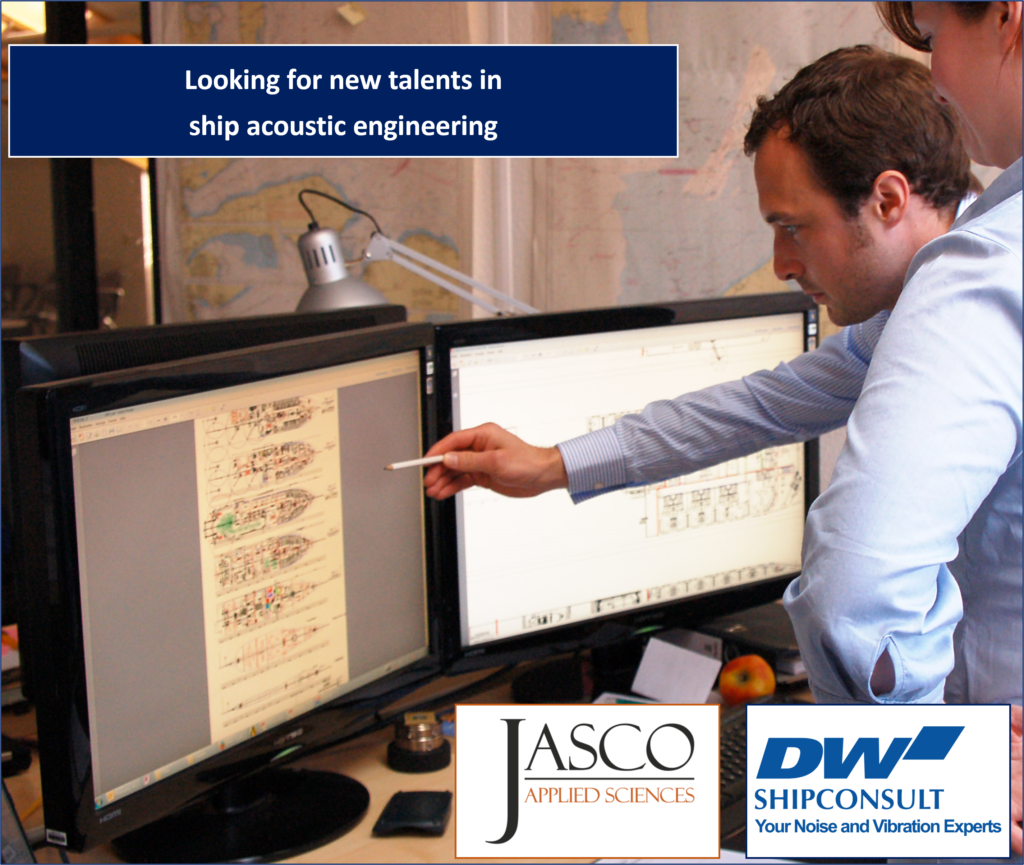
Underwater Radiated Noise investigations on Whale Watching Vessels off Vancouver Island
April 28th 2023
Since 2022, DW-ShipConsult has been conducting a study under the scope of Transport Canadas Quiet Vessel initiative with the goal of reducing the underwater radiated noise of whale-watching and recreational boats. Working with JASCO Applied Sciences and whale-watching tour operator Eagle Wing Tours of Victoria B.C., DW-ShipConsult selected and systematically measured a number of representative boats.
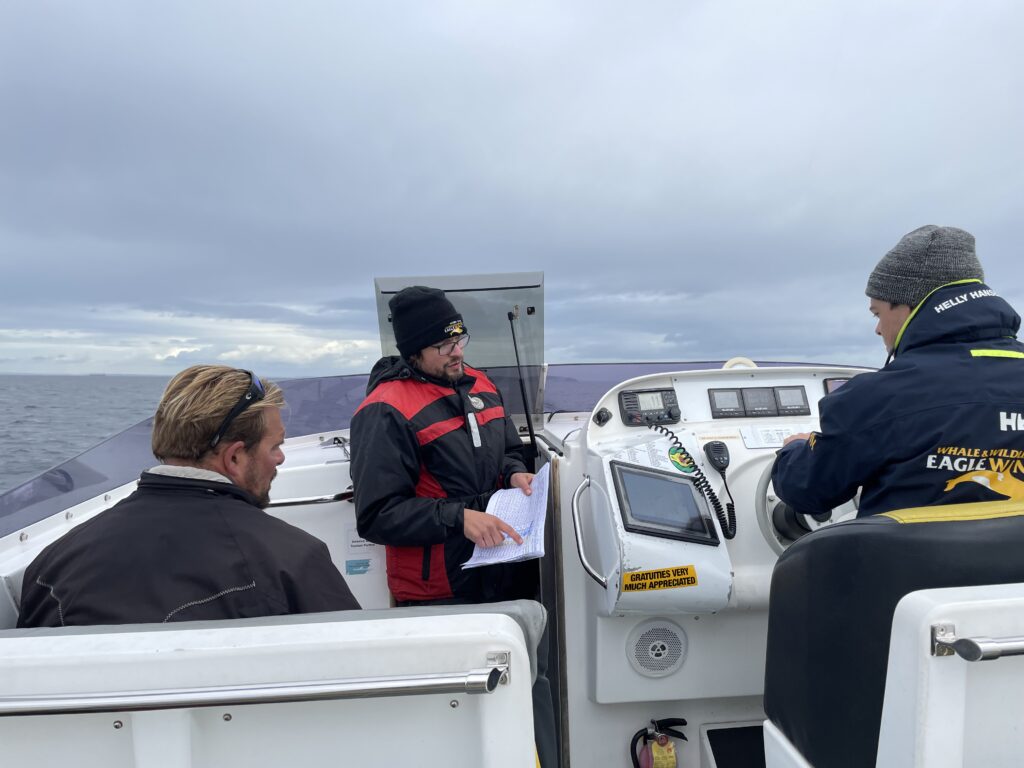
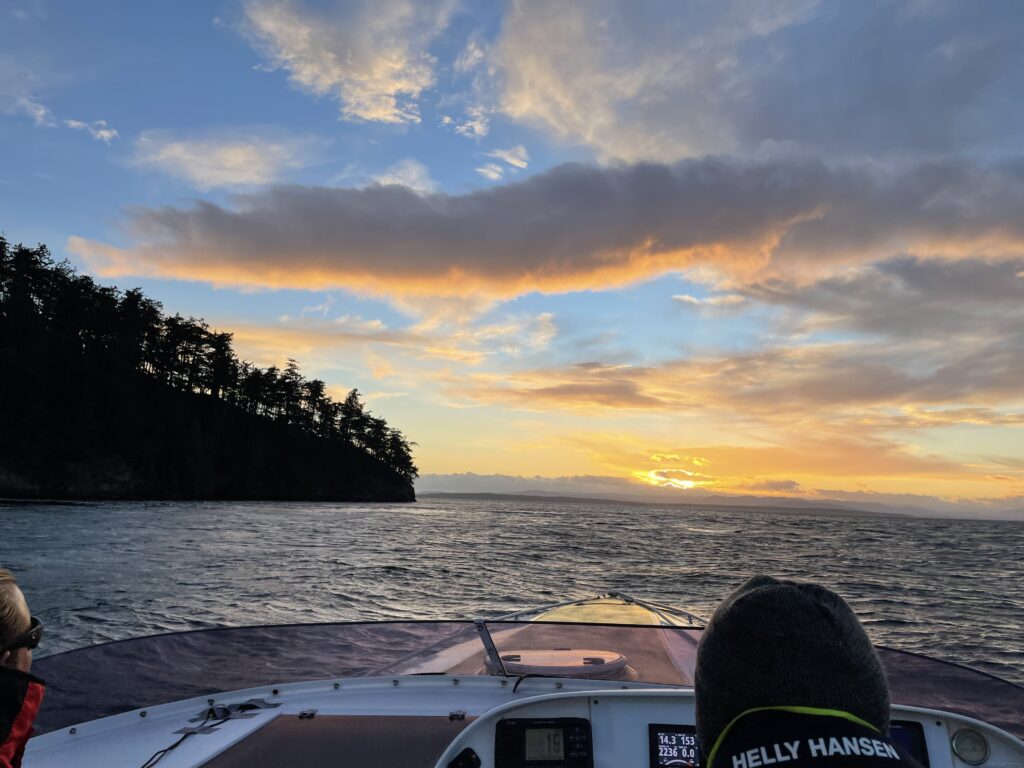
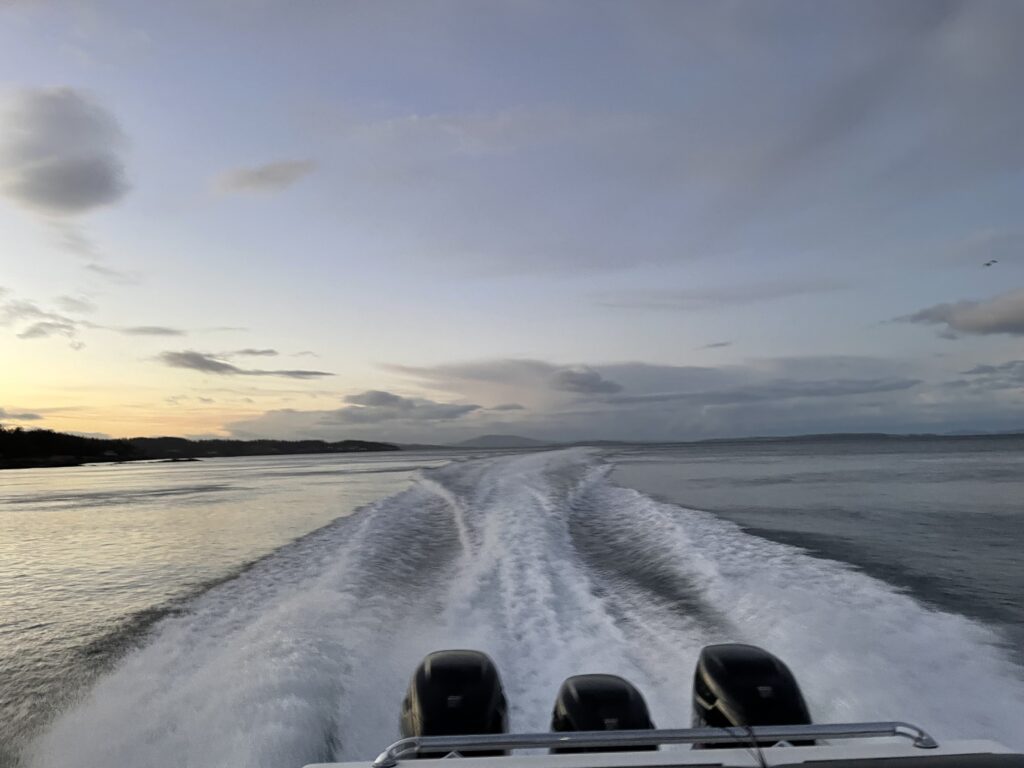
The underwater sound measurements took place in October 2022 on the west coast of Canada. During two weeks four different boats were measured by the Underwater Listening Station at different speeds, loading conditions and maneuvers. In parallel to the UW sound measurements, onboard sound and vibration measurements were performed on all noise contributor (like engines). Since then both sets of measurement data are analyzed in a combined way.
The goal of the analysis currently underway is to develop recommendations for action for operators of whale-watching boats on how to keep radiated underwater noise to a minimum. The recommendations are divided into:
1. design principles for newbuilding vessels.
2. design options for repairs and retrofits
3. indications of which operational driving behavior is particularly loud or particularly quiet.
Results of the study are expected by the end of 2023.
DW-ShipConsult joins the JASCO Group
May 5th 2022
Two leading players in the sector of shipping noise mitigation have formally joined forces as DW-ShipConsult GmbH becomes a fully owned affiliate of JASCO Applied Sciences (Deutschland) GmbH, a member of the JASCO Applied Sciences global group of companies. After the signing in Berlin of the acquisition agreement on 2 May, a joint statement was issued by Thomas Büchler, who succeeds the founder Dietrich Wittekind as Managing Director of DW-ShipConsult, and Roberto Racca, Managing Director of JASCO Applied Sciences (Deutschland) and one of the principals of the JASCO group:
“We are delighted at this major milestone in the evolution of our companies, which formalizes a collaborative relationship that has existed for years among our teams. DW ShipConsult and JASCO have long partnered to conduct landmark scientific studies aimed at lessening the impact from shipping noise on marine life around the world, and pride themselves in being regarded as valuable contributors to the preservation of marine species threatened by the steady increase of human activities in the oceans. The joint capabilities of the combined team create an unparalleled new resource at the service of the naval industry, offering complete noise management solutions from the engineering design of on board systems to the assessment of effects on aquatic life.”
— Thomas Büchler and Roberto Racca
As a result of the merger, the two companies will undertake a gradual alignment of their administrative frameworks and resources starting with the consolidation of JASCO Applied Sciences (Deutschland)’s legal seat and operating address with the headquarters of DW-ShipConsult in Schwentinental, Germany. They will still preserve the defining corporate traits that over the years have fostered dedication and loyalty among their teams and recognition among clients and partners, the directors stated.
About JASCO Applied Sciences:
JASCO Applied Sciences provides consulting and research services for assessing and mitigating underwater noise. Since its origin in 1981, JASCO has been developing and implementing acoustic technologies ranging from advanced acoustic recorder design to complex acoustic modelling algorithms to comprehensive field monitoring and data analysis. JASCO Applied Sciences operates its worldwide group of companies out of headquarters in Dartmouth, NS, Canada.
Underwater Radiated Noise – Silent E for Cruise Vessels
March 7th 2022
Expeditionary Cruise Vessels sometimes operate in quite remote areas. The passengers of these very special ships like to see the pure and untouched beauty of the marine nature. In these unpopulated areas the sea and air is dominated only by natural sounds. Tourism certainly changes that but the compliance with a silent notations of one of the different classification societies at least indicates that such a ship is relatively quiet compared to others. Compliance with such a notation means that the noise emissions into the water are below a given limit.
DW not only assists in the quiet design of a ship in order to comply with such limits on underwater radiated noise (URN). DW also directly measures the URN at sea. With an own developed measurement device, the DW-MAR, it is possible to obtain measurement data at a place of the ship’s choice and avoid a costly stationary measurement range. Several cruise vessels and research ships have already been measured by us. The result is not only a certificate that such a ship is ready to comply with a certain limit curve. We also show what noise contributors are the most dominant at a certain operating condition and what measures can be taken to lower them to an acceptable degree.
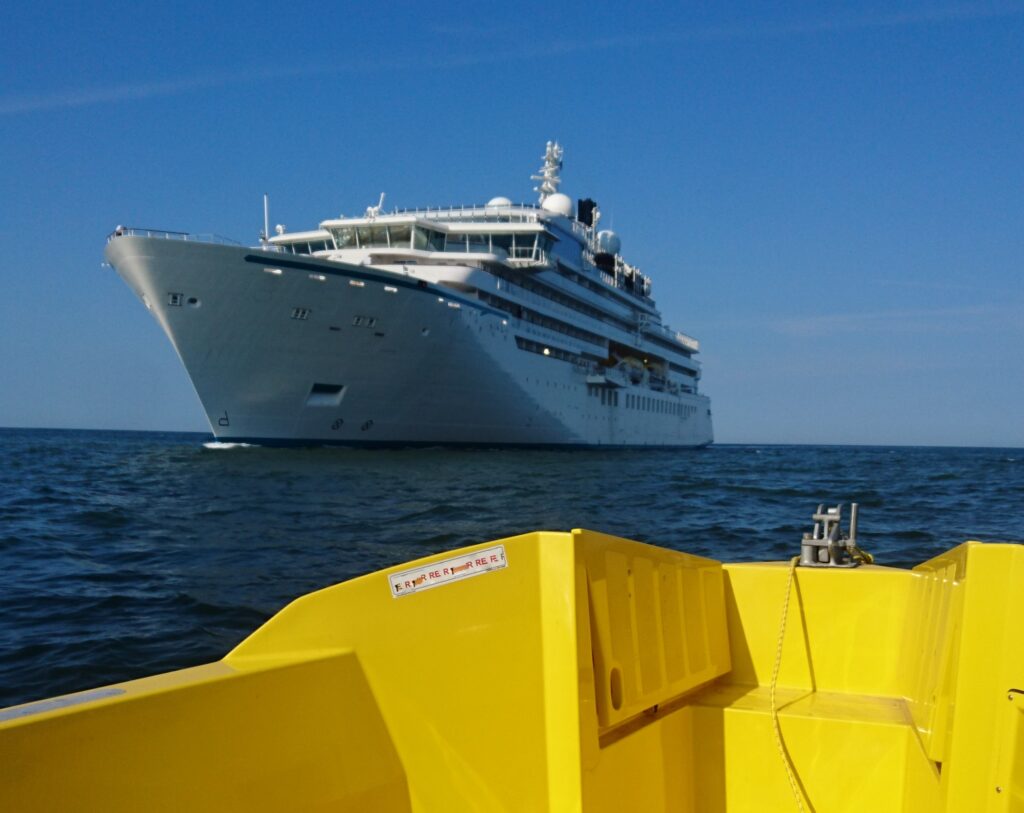
Investigation and Control of Excessive Deck Vibrations
February 24th 2022
A newbuilt Cargo Vessel reported excessive vibrations on several equipment mounted at the structure on two specific decks. Our customer was concerned of structural damages due to these high vibration levels.
DW investigated the problem by means of interviews and found out that the most excessive vibrations occurred at a specific speed and rpm.
On the ship, DW measured the vibrations at the critical locations, at the engine and above the propeller. Measurements of natural frequencies on the decks completed the measurement program.
The results showed that the natural frequency of the deck exactly matched on excitation frequency of the propulsion system. This explained the observed vibration amplitudes.
The recommendations for countermeasures contained several additional stiffeners, girders and beams in order to increase the natural frequency of the critical structures. That way, those structures will not longer vibrate in resonance.
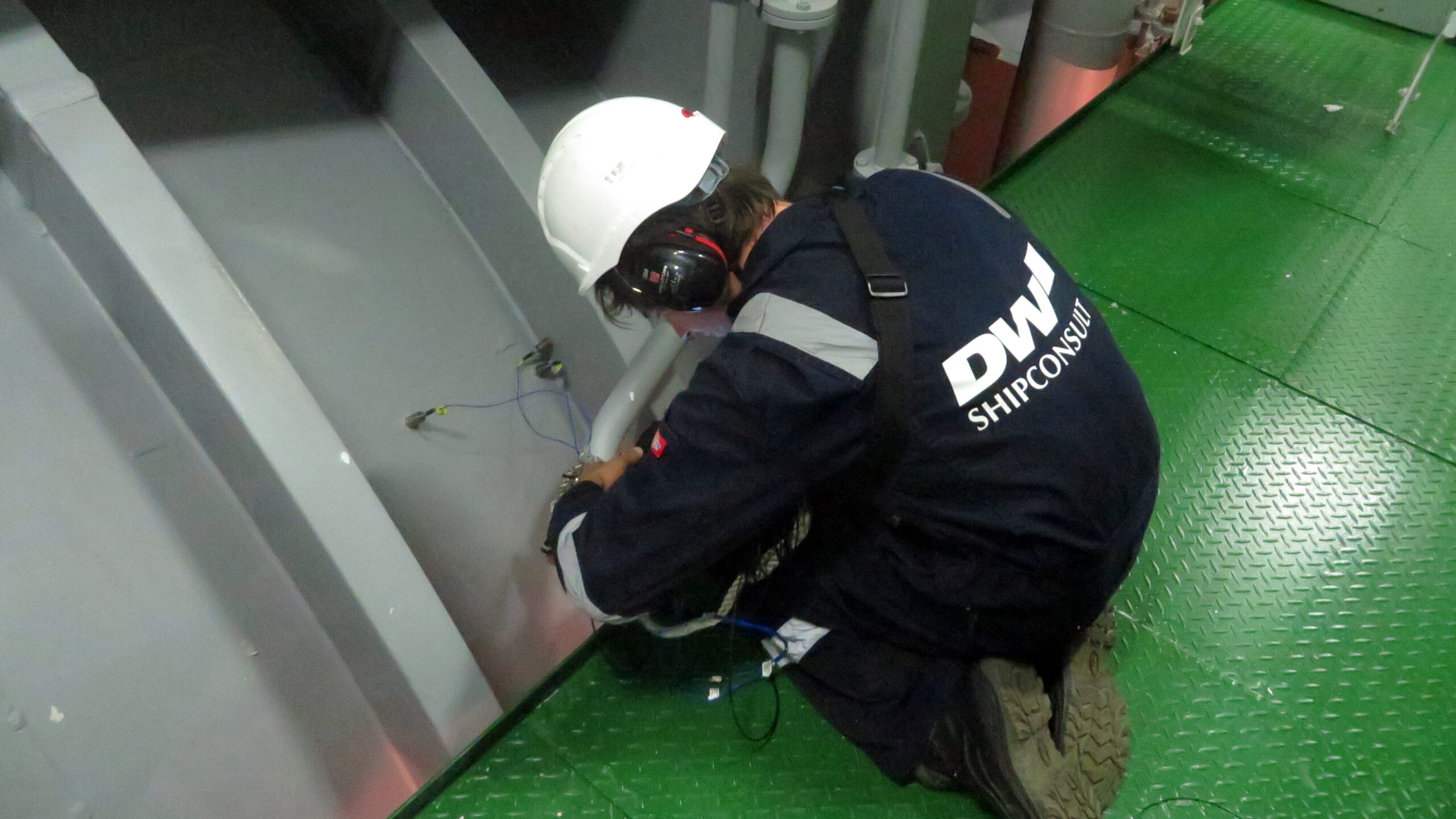
Modelling of the ambient underwater noise in the Arctic
January 10th 2022
A spatiotemporal acoustic model for the Antarctic sea was developed for the German Federal Environmental Agency. This model is able to give a graphic impression of the noise distribution in this area in relation to the observed ship traffic of the past. The development was based on:
- The ASTD ship database of the PAME working group; offering information of ship traffic in Arctic Waters between 2013 and 2019
- Technical vessel details of all 6,000 ships which have operated in that area during that time.
- DW’s own developed acoustic ship model
- All environmental, physical and bathymetric particularities of the Arctic Sea
Aim of this project was to assess the impact of anthropogenic noise on marine life.
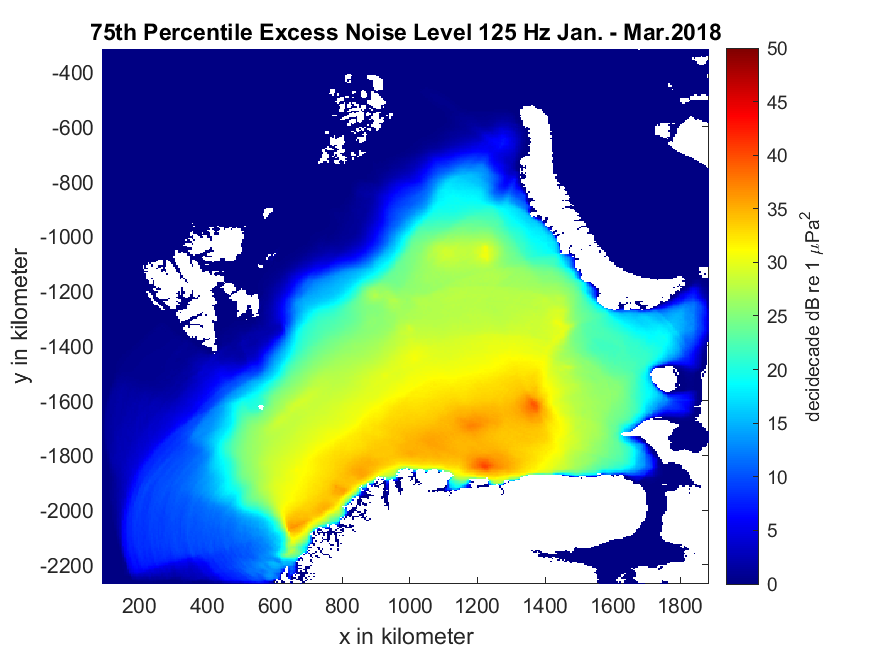
The „Green Water Taxi“ commences operations
September 1st 2021
The zero-emission shipping is the ambitious goal of many stakeholders within the international maritime industry. Today, the brand new “Green Water Taxi” has already achieved this goal.
The small passenger vessel is driving on 100% wind, solar or stored electrical power and also does that with a decent speed. The 16 knots of cruise speed is the maximum allowable speed in the environmentally protected area of the German Wattenmeer. At such a speed and such a quiet propulsion this Green Water Taxi is a very comfortable way for a quick transfer between the mainland and the touristic destinations on the North Sea Islands.
But how was this innovative vessel developed? The INTERREG funded research project “Green Water Taxi” brought partners from industry and universities to a common table. The goal of that project was to develop a vessel which operates without any carbon emissions and addresses the special needs of an island transfer within the Wadden Sea, a protected area with temporarily very shallow waters below 0.5 m.
As part of that research group, DW-ShipConsult was responsible for the overall ship design, the hull form, the dimensioning of the propulsor and the battery. By application of the parametric fast hull (the pfh), a very low wave-resistance was achieved. Due to this significantly reduced resistance the cruise speed of 16 kn is achieved with only two thirds of the otherwise necessary installed engine power. In other words: Compared to conventional hulls the pfh allows the Green Water Taxi to go a 33% longer distance with the same battery capacity.
Currently the Green Water Taxi is tested by the Norden-Frisia ferry operator. But the market demand is not limited to the North Sea Island waters. Also other regions with many islands like Indonesia, the Maledives or the South Seas are suitable areas of operation. Especially in regions where many short leg transportation activities are observed, this zero emission Water Taxi can make a difference for our climate.
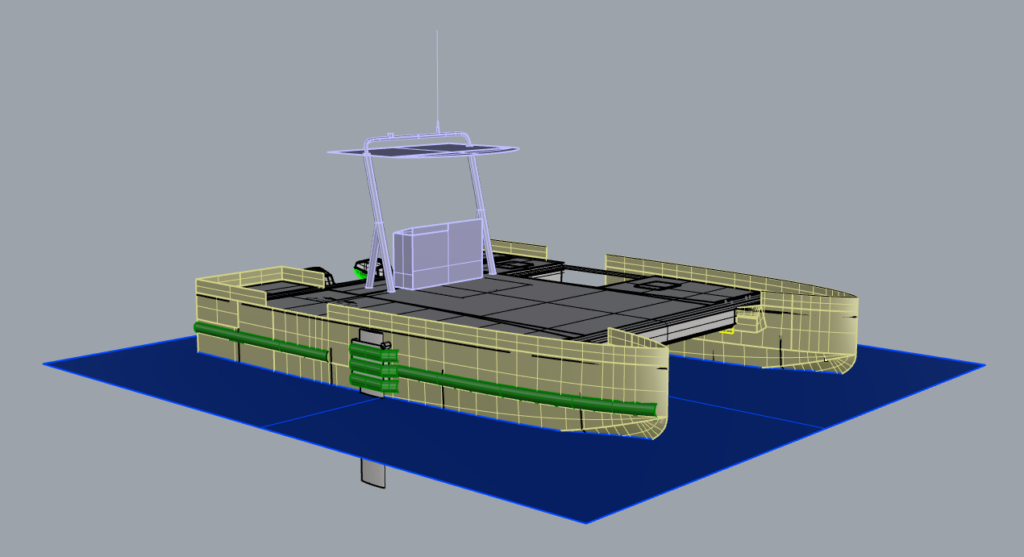
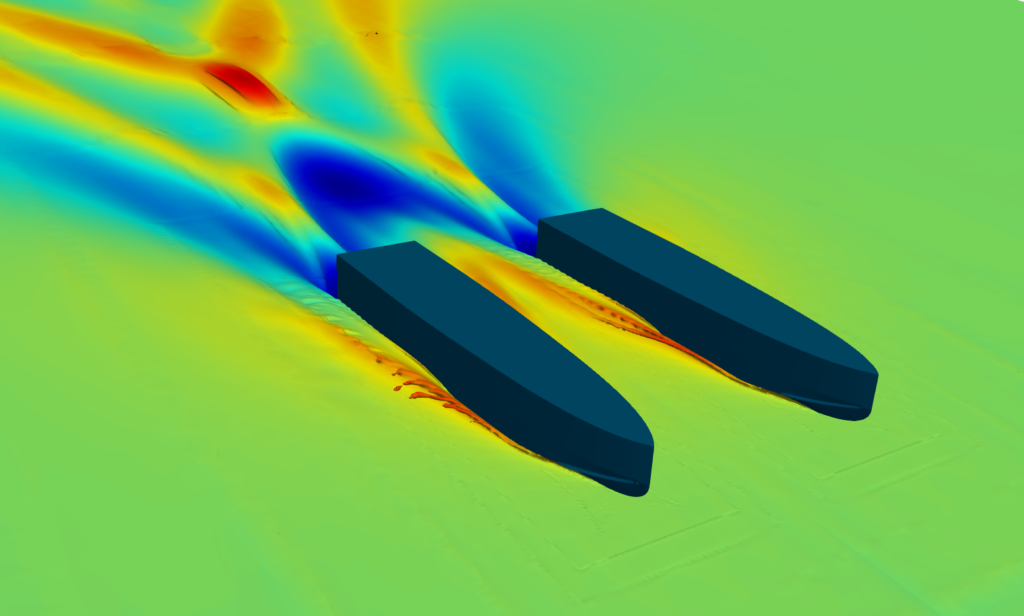
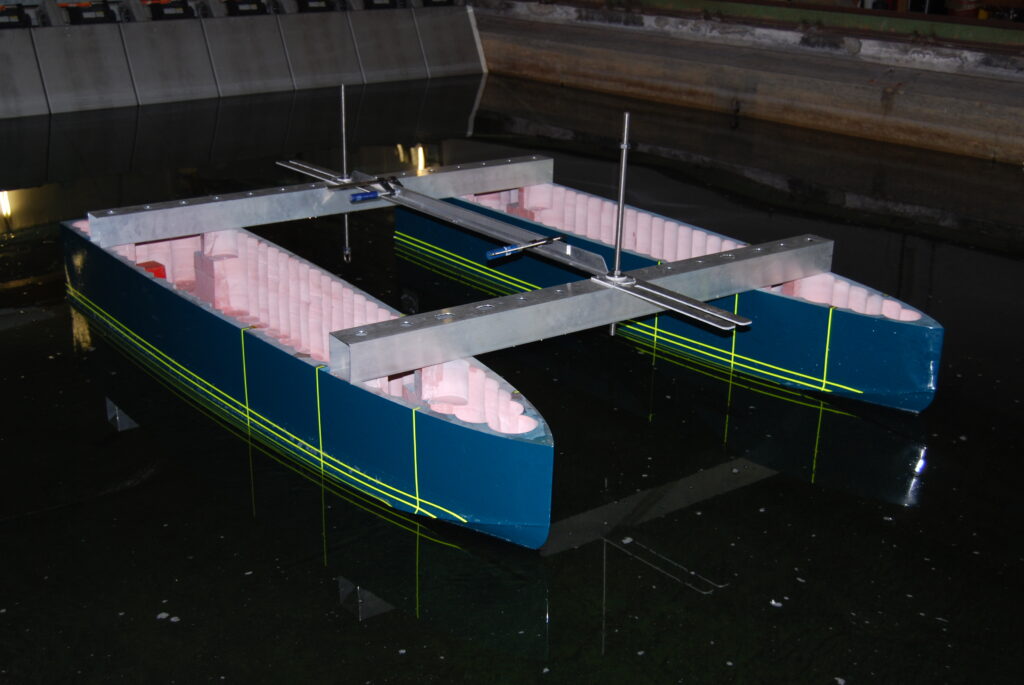
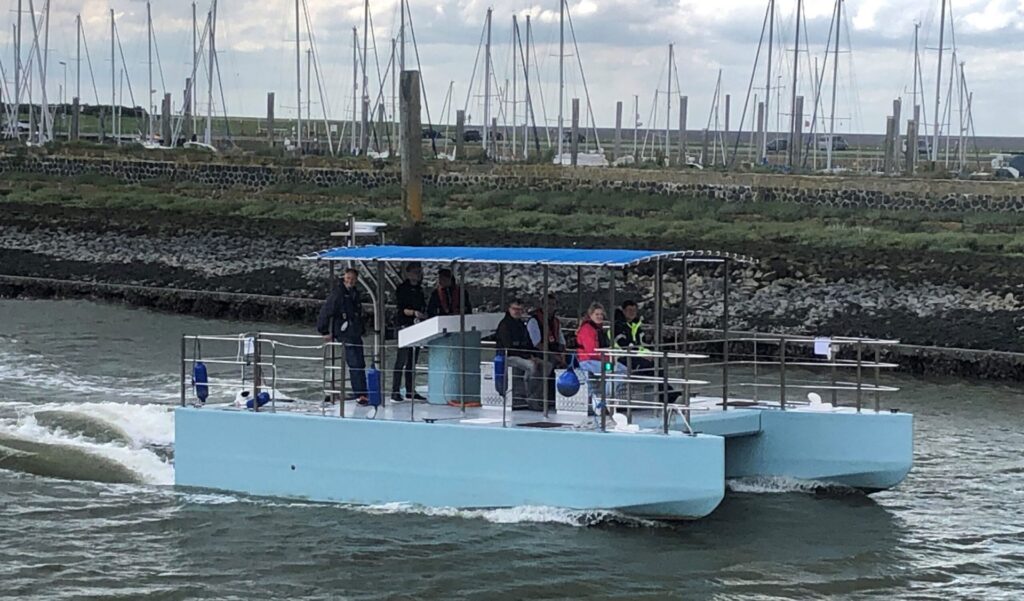
First Cargo Ship certified for ESI-Noise port fee discount
September 15th 2020
The MS BARZAN, an 18,800 TEU container vessel of Hapag-Lloyd, has received an ESI-Noise certificate to document the characteristic of its airborne noise emitted during a port visit.
The ESI-Noise certificate is based on the results of a comprehensive noise measurement by DW-ShipConsult. The measurement took place in the Port of Hamburg and followed the official NEPTUNES measurement protocol. According to this protocol, relevant noise sources on board like exhaust gas outlet or ventilation fans are measured in direct vicinity. Also noise measurements at given receiver locations are taken into account. A calculation process summarizes all measurements and considers annoying effects like low frequency tones. The resulting noise index (ESI-Noise) can be used to apply for port fee discounts in Rotterdam, Hamburg or other ports. For more information please look into the STC-Maritime-regulations provided by the Hamburg Port Authority. To apply for a measurement with resulting certificate please contact Mr. Thomas Büchler from DW-ShipConsult.
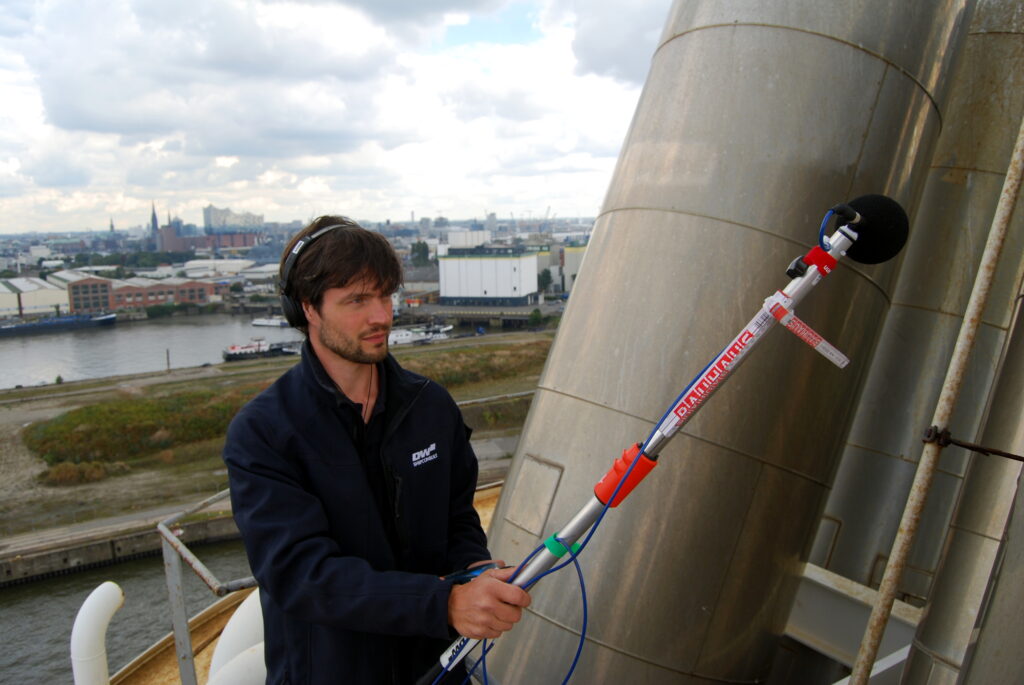
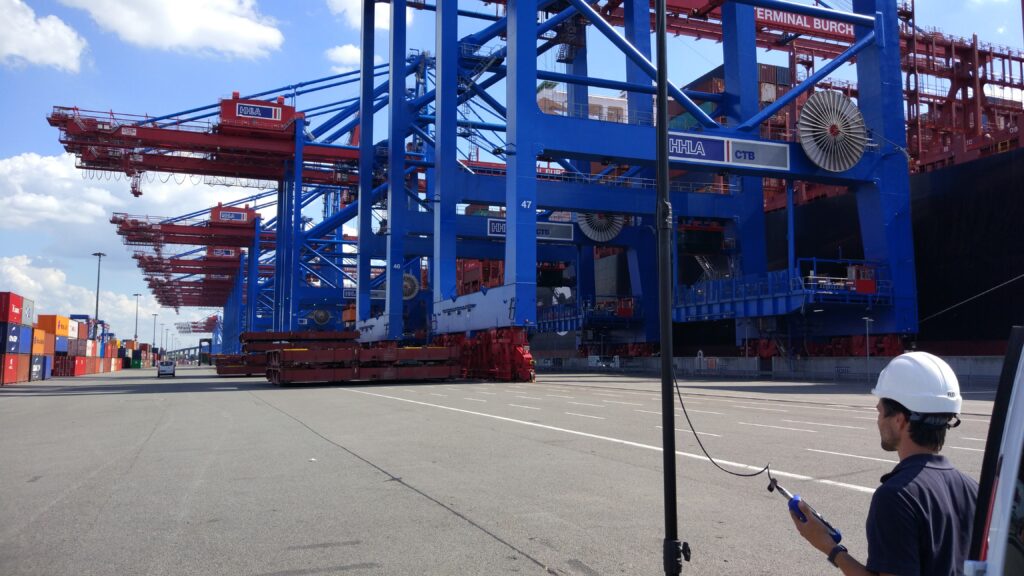
Published paper on the sound modelling around hydroacoustic sources
March 13th 2020
Max Schuster published a reviewed paper in the Journal of Ocean Technology together with his colleagues Dr. Dietrich Wittekind and Matthias Fischer as well as Mirjam Müller of the German Environment Agency.
While noise emissions are an unintentional by-product of shipping operations, hydroacoustic equipment such as multibeam sonars deliberately introduce high levels of noise into the subsea environment. In this paper, we model the sound field around a ship operating two types of hydroacoustic equipment, both in directions that are meant to be insonified and those that are not. A concept has been developed to quantify the accumulated noise exposure to a receiver in the water space around the ship. The paper describes the philosophy of the approach and the calculated sound exposure around the transmitting sound source for two typical systems.The results for noise exposure can be used to assess the effect on animal receivers with their respective characteristics.
The whole article can be found here.
This is a summary of work completed for and with the funding by the German Federal Environment Agency – the regulatory body for German vessels using airguns and scientific sonars for research in Antarctica. The research led to sound charts of typical instruments used (only two are described in this paper) and the exposure level of animals in the vicinity. The results are used by the agency to judge the risk for the animals and to possibly discuss regulations for the use of airguns and sonars in these waters.
Underwater Noise Research Project T-SCHALL
March 2nd 2020
The research project T-SCHALL is entering the second phase: Systematic Underwater Radiated Noise (URN) measurements of selected Mega-Yachts and Cruise Ships shall provide necessary validation data for the preliminary prediction model developed so far.
T-SCHALL considers the Low-Frequency Sound Radiation of Machinery Induced Noise into the Water (Tieffrequente Schallabstrahlung von Maschinengeräuschen ins Wasser). The aim of the project is to investigate the fundamental law of low-frequency sound-excitation, -propagation and -radiation from machinery to the ship hull into the water and implementing these in a prediction model. The model should provide relevant information in an early design stage of the ship to reduce time-consuming changes and adaptions in later project phases. The gained knowledge allows better prediction, avoidance of unnecessary mitigation measures,noise reduced operations and a higher acoustic quality. For cruisliners, which are likely to be the first to be subjected to underwater noise specifications a safe assessment of risk and a tool box of mitigation measures will be derived.
The motivation behind the research project is the increased awareness for underwater noise and its potentially harmful effects on marine life, especially marine mammals. The IMO, the European Union and Canada are very active in this field (e.g. the ECHO-program of the Vancouver Fraser Port Authority and several IMO initiatives).
The T-SCHALL project team, consisting of distinguished industrial and academic partners, has the ambition to set a new benchmark for feasible underwater noise signatures and stay on the forefront of research in this key technology. First results of the project are already used in current projects of the partners thus allowing more directed and less cost-intensive mitigation measures and reducing the acoustic footprint of the newbuilt vessels.
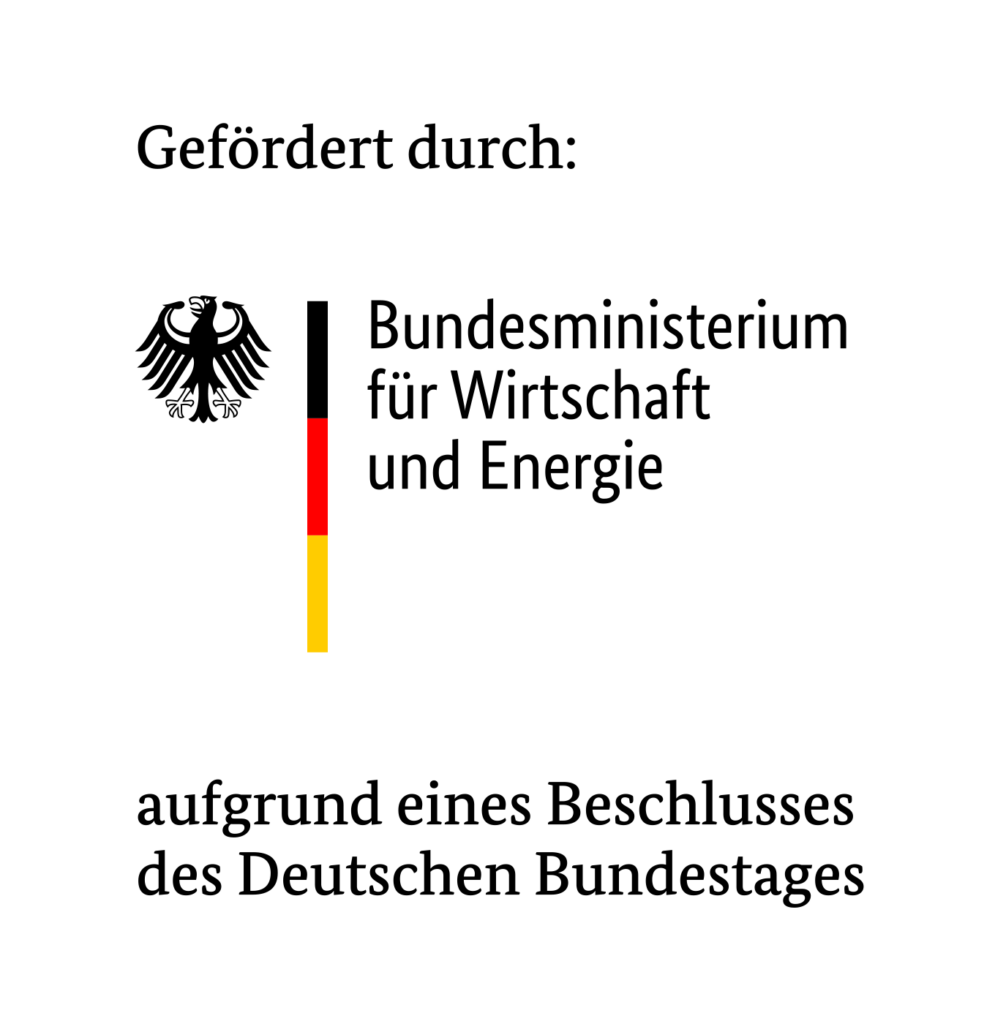
This project is part of the research program “Maritime Technologies of the next generation” of the Federal Ministry of Economics and Energy with the assistance of the Projektträger Jülich.
Panel discussion at the ifaw forum – involve. resolve.
February 25th 2020
Hamburg. At the annual ifaw forum – involve. resolve. Dr. Dietrich Wittekind was one of the key speakers in the panel discussion on underwater noise and its effects on marine life, especially marine mammals.
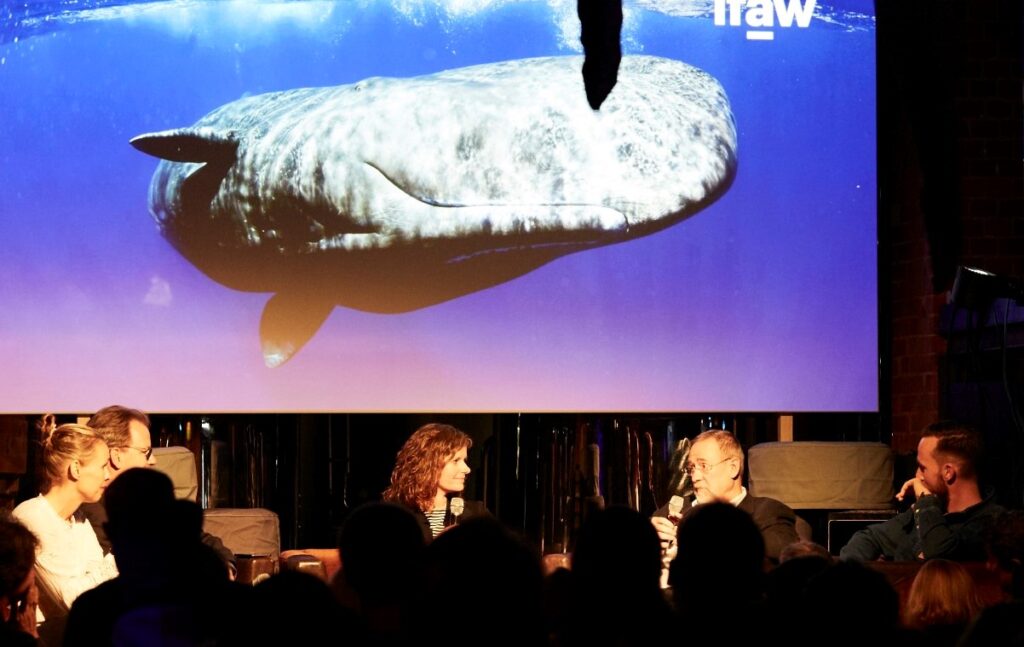
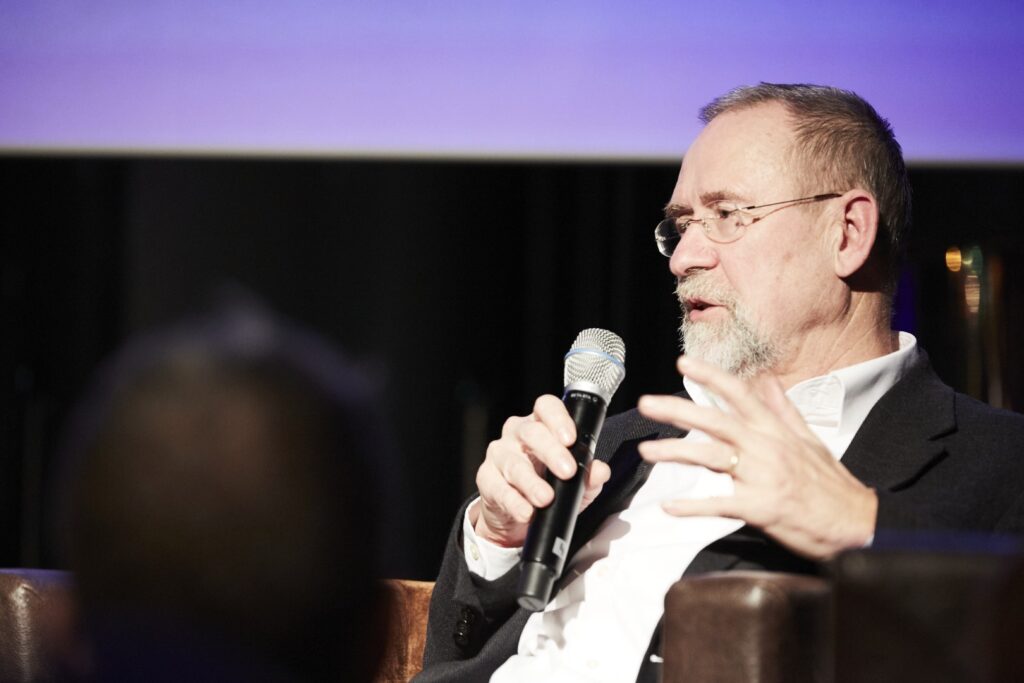
Dietrich Wittekind stated that improvement of underwater noise of ships can be achieved by using established engineering procedures to design propulsion systems. Beyond this, research is required to provide a reliable tool box for ship designers to reduce propeller noise emissions. Most ships dominating global underwater noise are built in the Far East and interest of relevant stake holders has to be raised to deal with the issue. Currently, commercial considerations (cheap ships) dominate all aspects.
IFAW is the International Fund for Animal Welfare. Its German branch is located in Hamburg.
ESI-Noise Measurements for Ships approaching the Port of Hamburg
December 20th 2019
Starting April 2020 the Rotterdam Port Authority and the Hamburg Port Authority will grant reductions on the port fees for those ships able to present an Airborne Noise certificate according the the ESI noise standard (Environmental Ship Index). This certificate according to ESI noise standard shows the acoustic characteristics of a ships noise emissions in port.
DW-ShipConsult is a certified service supplier for these measurements.
We offer to measure ship noise emissions and provide an ESI-Noise certificate. These measurements can be conducted concurrent to the usual harbour operation without any implications on ship operations.
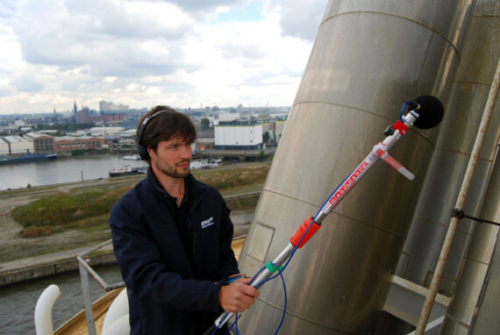
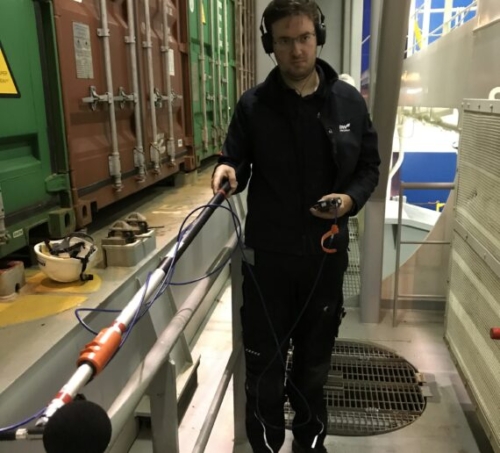
Noise Measurements on Cruise Ships in German Ports
DW-ShipConsult conducted a study on Cruise Ship and Cruise Terminal emissions for the Hamburg Port Authority (HPA) during the Interreg Project „Green Cruise Port“. This study focused on the systematic documentation and evaluation of all sources for noise, air pollutants and green house gases (GHG) connected with the berthing of a Cruise Liner. To do that, DW-ShipConsult measured noise on board of several Cruise Ships, on the pier and at different noise contributors in port (e.g. busses, trucks, cargo handling, ventilation on the terminal roof, etc.).
Based on the analysis of the findings, mitigation measures where discussed and evaluated. Some measures like a LNG power pack or a power barge where also measured for its noise reduction potential for the whole terminal and ship.
The study provides recommendations for future Cruise Ship Terminal and Cruise Ship operation in ports with a minimum of noise, GHG or air pollutants emissions.
Released January 7th 2019
